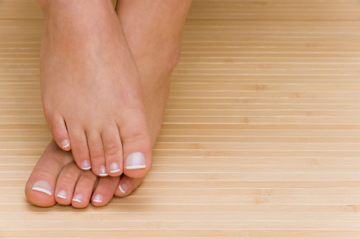Foot Care/Anatomy

• A foot has 26 bones (28 if you count the two little bones near the big toe joint), 33 joints and more than 100 muscles, tendons and ligaments.
• The forefoot contains the five toes (phalanges) and the five longer bones (metatarsals).
• The midfoot is a pyramid-like collection of bones that form the arches of the feet. These include the three cuneiform bones, the cuboid bone, and the navicular bone.
• The hindfoot forms the heel and ankle. The talus bone supports the leg bones (tibia and fibula), forming the ankle. The calcaneus (heel bone) is the largest bone in the foot.
• Muscles, tendons, and ligaments run along the surfaces of the feet, allowing the complex movements needed for motion and balance. The Achilles tendon connects the heel to the calf muscle and is essential for running, jumping, and standing on the toes.
• Both the midfoot and forefoot constitute the dorsum (the area facing upwards while standing) and the planum (the area facing downwards while standing).The instep is the arched part of the top of the foot between the toes and the ankle.
• ¼ of all bones in the human body are down in your feet. When these bones are out of alignment, so is the rest of your body.
• Women have about four times as many foot problems as men (thanks to high heels!).
• Feet mirror your general health. Conditions such as arthritis, diabetes, nerve and circulatory disorders can show their initial symptoms in your feet.
• There are 250,000 sweat glands in your feet and they can excrete up to half a pint of moisture per day.
• The average person takes approximately 8,000-10,000 steps a day – about 115,000 miles over a lifetime. That’s enough to go around the circumference of the earth four times.
• General footcare tips: Wash your feet daily. Rinse off all soap and dry thoroughly, especially between toes, trim nails straight across, and not too short. Don’t cut out or dig at corners, do not trim, shave, or use over-the-counter medicines to dissolve corns or calluses, wear clean socks or stockings, changed daily. Don’t wear any that are too short or too tight, wear shoes that fit.
• If your feet are extra sweaty you may be more prone to athlete’s foot. Be sure to: wear shoes made of leather or canvas – not synthetics, switch shoes from day to day, use foot powder.